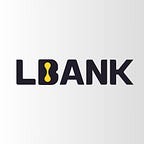Understanding Basis Trading — Arbitraging Spot & Futures
Conventionally, arbitrage pertains to the strategic exploitation of price disparities across various markets. Within the context of futures contracts trading, futures arbitrage involves capitalizing on divergences in prices between underlying assets and their corresponding futures contracts. Basis trading is a futures trading strategy that focuses on the difference between the spot price of a commodity and the price of a futures contract for that same commodity. This price difference is called the basis. Traders initiate “long the basis” trades when they anticipate the basis to increase, and “short the basis” trades when they expect the basis to decrease. The main objective of basis trading is to capitalize on the expected change in the basis to generate profits. Let’s explore basis trading and highlight the steps trading this strategy.
What is Basis Trading?
Basis trading is a renowned trading strategy that necessitates the presence of both a spot market and a regulated futures market. Conveniently, LBank offers both of these trading instruments.
In simple words, basis trading exemplifies a form of arbitrage wherein a trader concurrently assumes opposing positions within the spot and futures markets of a given asset, aiming to capitalize on divergences in pricing. The disparity in pricing is termed the basis. While we refrain from dispensing investment advice, we wish to illustrate this concept with an example. Suppose a trader procures Ether at a rate of $2000 and subsequently sells an equivalent value of futures contracts at $2050. By doing so, they can secure a profitable $50 basis per contract as a price differential. This said, it’s important to acknowledge that losses may also ensue if a favorable price differential cannot be secured.
One interesting fact about this strategy is that traders can profit from both long and short positions. Meaning, traders can buy and sell, a basis trade to maximize profits.
How to Basis Trade Crypto?
As previously mentioned, the trade basis constitutes the variance between the ongoing spot price and the derivative/futures price of the given asset. In the domain of cryptocurrency trading, the basis is calculated as the disparity between the spot price and the futures price.
The calculation of the trade basis follows this formula:
Basis = Spot Price — Futures Price
The cryptocurrency basis market offers traders two potential trading avenues: Long and short positions.
In the scenario where Ethereum futures are valued at $2000 and the spot price stands at $1850, initiating a short position on the futures can be considered, with the anticipation that they will align with the spot price of $1850.
Conversely, if the futures price amounts to $1850 while the spot price is $2000, opting for a long trade on the futures may be deemed appropriate, with the assumption that they will subsequently decrease.
Employing the basis strategy provides traders with the opportunity to yield substantial profits through leverage on the derivative product. Here’s a concise guide on how to execute a basis trade on LBank:
- Identifying a Suitable Derivative
Navigate to the “Markets” section on LBank and locate a cryptocurrency featuring a futures derivative. Prominent cryptocurrencies like Bitcoin and Ethereum typically offer both spot and futures listings. By toggling between the “Spot” and “Contract” options at the top, you can explore eligible cryptocurrencies.
Analyze the disparities between the spot and futures prices. If the futures price is lower than the spot price, contemplate initiating a long position on the futures, and vice versa. Ground your trade decision on your outlook for the future trajectory of the markets.
2. Buy Spot Assets
Start the trade by purchasing the asset on the spot market. This provides you with ownership of the underlying asset. For instance, buying Bitcoin instantly grants you ownership of Bitcoin stored in your wallet. Traders can place various types of orders, such as limit, market, or conditional orders.
3. Buy Futures Contracts
In a futures basis trade, a counteraction to the spot trade is undertaken. Futures contracts represent leveraged positions that are distinct from the underlying asset.
Upon visiting the Bitcoin futures page, you will access the most recent contract price for Bitcoin. LBank facilitates trading with leverage of up to 125x, empowering users to harness increased market exposure.
Rewards and Risks of Basis Trading
Basis trading offers a range of distinct advantages. It provides a level of price stability that benefits producers, consumers, and traders alike. By allowing market participants to hedge against potential future price fluctuations, basis trading acts as a valuable risk management tool. Furthermore, it inherently reduces overall risk exposure. The availability of leverage in basis trading amplifies potential returns, making it an attractive strategy for those seeking to optimize their trading outcomes.
However, like any trading strategy, basis trading comes with its share of risks. Improper utilization of leverage without diligent risk management can lead to significant losses, underscoring the importance of responsible trading practices. Inaccurate analysis of assets might lead to misguided basis trading decisions, emphasizing the necessity of a well-informed approach. Straying from well-defined trading plans, especially in the face of losses, can erode the effectiveness of basis trading. Lastly, the failure to simultaneously close both positions of a basis trade can expose traders to unforeseen market movements, underscoring the need for meticulous execution.
Wrapping Up
Basis trading stands out as an effective trading strategy, particularly in scenarios where the market lacks pronounced volatility. This strategy, well-established within traditional asset classes, also holds substantial value for cryptocurrency traders. LBank facilitates the exploration of basis trading by seamlessly integrating spot and regulated futures functionalities for cryptocurrencies. With our platform, traders can access enhanced price transparency, optimized collateral utilization, and a diverse range of prospects to articulate their market perspectives, encompassing the dynamic realm of basis trading.
Disclaimer: Derivatives are often volatile, and this can be a risky investment. The information provided in this article is solely for educational purposes and shouldn’t be regarded as financial advice.
